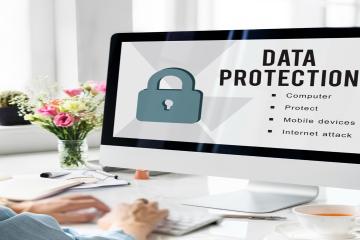
Top 5 IT Upgrades for 2023
It’s 2023 and your IT probably needs a major overhaul.
Let’s face it – IT is expensive. In fact, the IT budget at many organizations can exceed that of all other divisions. This high cost makes it essential that your organization’s leadership knows how to plan for IT expenditures and acquire the most relevant and effective technology to achieve your enterprise’s goals.
Where do you get started?
Your firm should always consider starting with a quality, certified IT assessment in order to get a grasp on current strengths and weaknesses.
What are the most important IT goals to achieve in 2023?
IT goals differ drastically between organizations. However, the top 5 goals outlined in this post should be considered by all organizations. Cybersecurity and IT assessments give visibility into the technical and operational gaps at your organization, all while revealing user dissatisfaction associated with IT. Outsourcing your IT helpdesk (either fully or in part) is a fast way to improve service and response time. Moving outdated, clunky on-premise apps to the cloud is a great way to improve security while cutting maintenance costs. Managed detection and response services are the new gold standard in protecting your mobile workforce and essential systems. And finally, maintaining a secure and effective cloud-based file sync and share is the best way to win points with your users while maintaining security around the organization’s most essential data.
Below, we expand upon the Top 5 IT upgrades that our experienced team of consultants have observed provide the greatest value to clients – all while managing cost and improving end-user experiences.
1) IT and Cybersecurity Assessments
a. A third-party IT assessment by certified professionals can help leadership and IT take that first step towards improvement. The goal of an effective assessment is to outline the gaps of an organization so that executive decision-makers can use this information to govern future spending and staffing. The most significant opportunities can be revealed by an assessment that includes metrics such as end-user satisfaction, cost control, IT governance, and cybersecurity posture. Starting off with an assessment and utilizing it to create a roadmap is a winning strategy that indicates a higher level of IT maturity. This is often the first step towards truly modernizing IT and enabling IT to provide genuine value to your organization.
2) Outsourced, Remote Helpdesk – get the support you need, quickly
a. IT helpdesk is a seemingly simple concept plagued by endless staffing headaches and skillset gaps. When outsourcing IT support with the right partner, your organization can get the benefit of a fully-staffed IT organization, ready at a moment’s notice to assist your end-users. At the end of the day, rapid issue remediation enables your employees to perform their job efficiently and smoothly. When selecting IT vendors, look for firms that emphasize customer satisfaction and first-response time above all else. Additionally, you will likely want to consider a firm that is based in the same country as yours or has supported firms in your country in the past.
3) Software as a Service -> Moving on-premise apps to the cloud
a. Software as a Service (SaaS) is hardly a new idea. However, SaaS is rapidly disrupting the standard IT formula by hosting more and more of the critical services that organizations rely on. For many clients, SaaS is the optimal compromise between price, functionality, security, and usability. For example, moving a solution that is hosted on unsecured, outdated internal servers to a SaaS solution may appear to increase cost initially. However, when all factors are considered, including security risk and end-of-life support, many organizations are surprised to find that SaaS turns out to be the less financially risky decision, all while generally providing the best tools for the job.
4) Moving to Managed Detection and Response (MDR) Security Services
a. Antivirus was great but it’s “moment in the sun” has come & gone. In 2023, we are seeing a sharp shift in requirements across the board for Endpoint Detection and Response (EDR) solutions instead of standard antivirus. Endpoint Detection and Response (EDR) is a newer set of security tools that rely on a Managed Detection and Response (MDR) team to operate most effectively. The idea behind EDR is to analyze all activity on a device and provide alerts to the MDR team for investigation. Advanced response options further assist the MDR team in preventing threats and keeping your workstations and servers safe – all while operating remotely from a central console.
5) Cloud-based File Sync and Share
a. Fileshares are another relic of the past. At this point, if your organization relies on a standard fileshare server or servers it is likely a security and functional liability. Cloud-based File Sync and Share (such as OneDrive, Sharepoint, Datto Workplace, Dropbox) are all solutions that are specifically designed to sync your files and maintain security, encryption, and management in a secure cloud. Moving to a cloud-based File Sync and Share can drastically improve your end-user experience, all while trimming out excessive storage costs associated with on-premise file servers. Additionally, file sync and share solutions generally come with extensive versioning, autosave, and protection features to ensure accidental or intentional deletion can be dealt with promptly.
Ready to move forward preventing, detecting, and responding to cybercrime?
Whether it be compliance, risk reduction, incident response, or any other IT or cybersecurity needs, Scarlett is here for you. Contact us today to discover what Scarlett can do for your organization.



